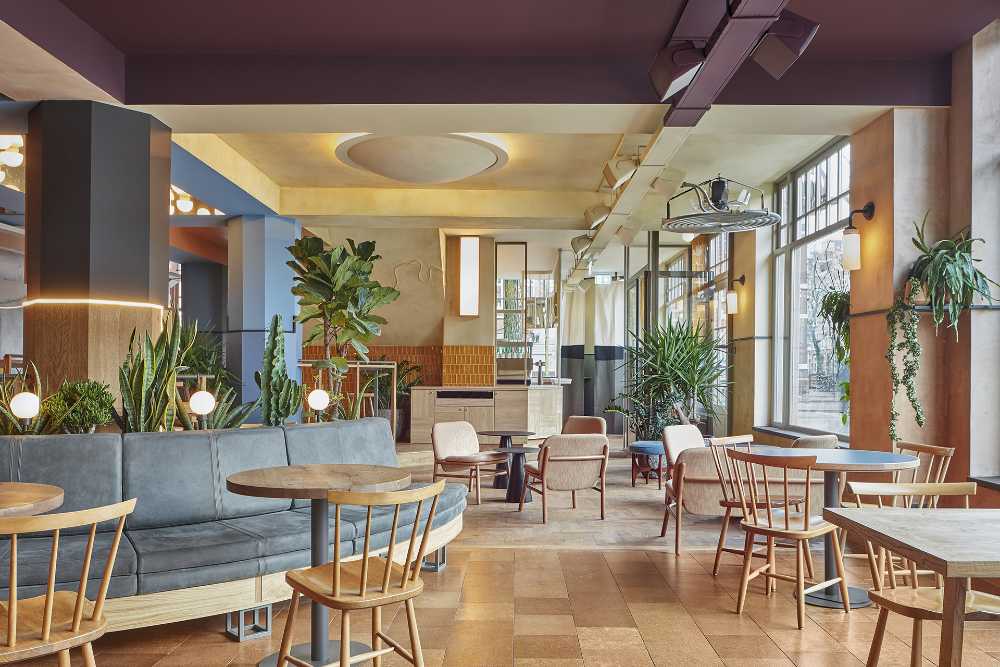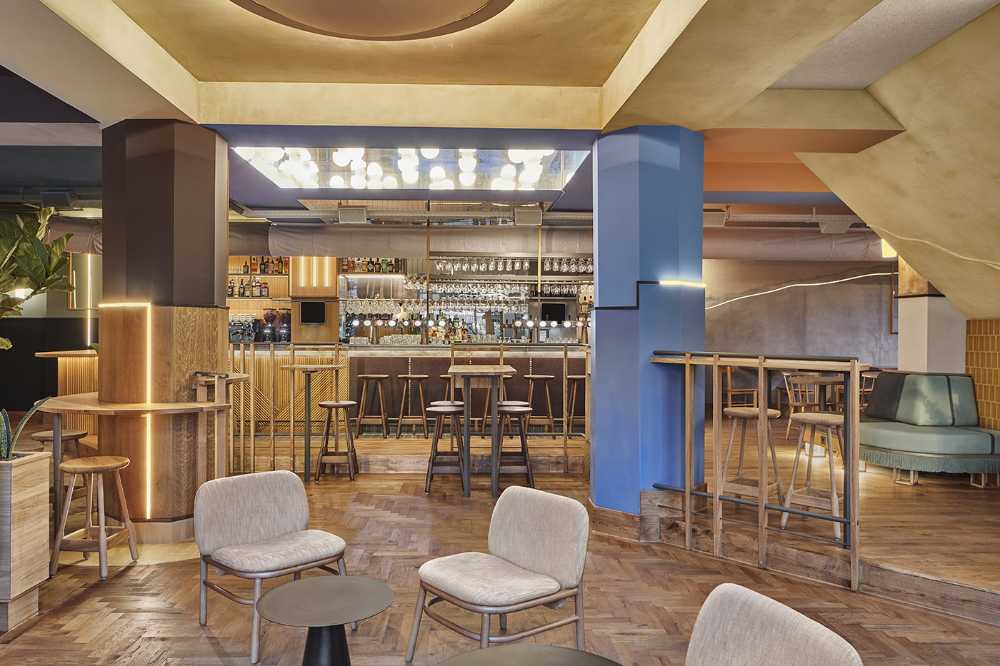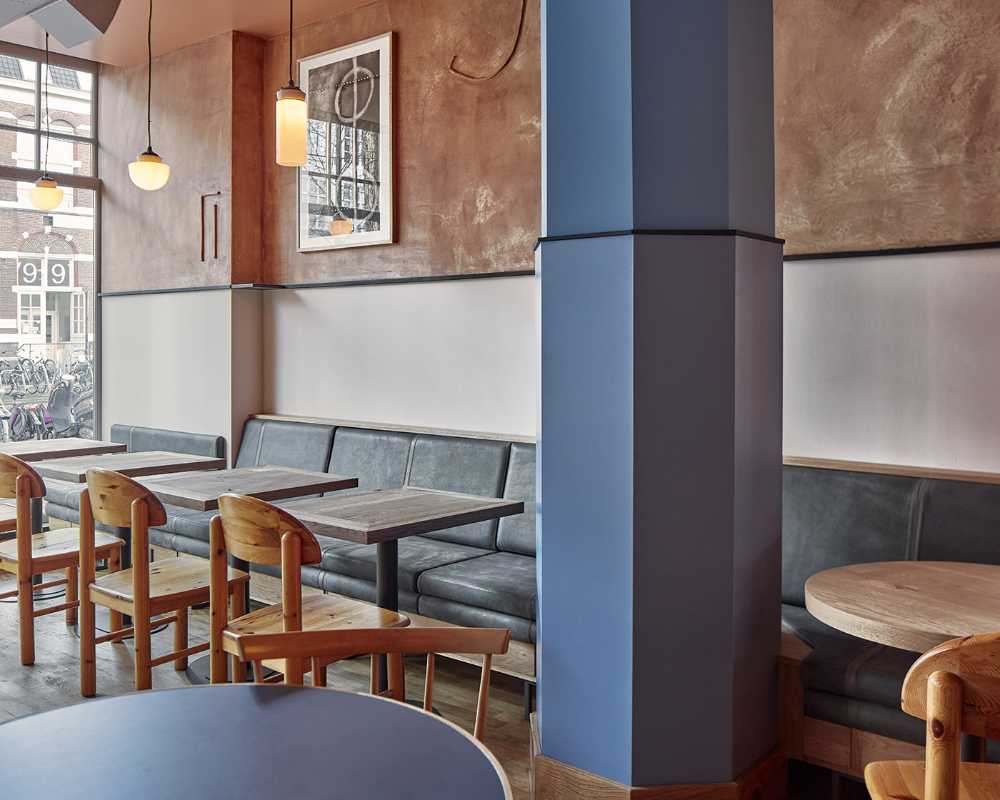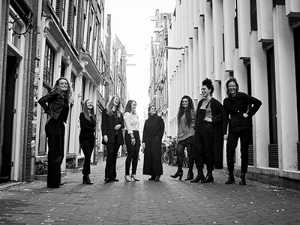The Kwakersplein Square has been transformed throughout history. Initially it was an industrial area outside the old city of Amsterdam, then it became part of the Bellamy district. Since then, people have been migrating to this point, just like a caravan


Cafeteria in Amsterdam symbol of a neighbourhood. The furniture divides the space into imaginary landscapes
The Bellamy neighbourhood was marginal to the city but since the 19th century people have been migrating to the suburbs like a caravan. The Modijefsky Studio transformed the journey into a concept of a bar and restaurant, hence the name Karavaan.
- #Europe
- #Netherlands
- #Bar / Cafeteria
- #Restaurant
- #Wood
- #Fabric
- #Ceramic
- #Color
- #Restyling
- #Interior
- #Architectures
- #Interior Design

The interior is ideally divided into different landscapes: meadows, marshes, forests, mountains and deserts, with each area characterized by its own combination of colours, materials and a specific design. On entering through the main vestibule, a circular ceiling light defines the lounge area below. From here the space unfolds in different "directions" marked by changes in colour, finishes and objects

Looking to the right a small bar with a fresh pastel palette is connected to a second entrance, located at the corner of the building. Walking through the herringbone wooden floor, towards the bar made of natural oak and white ceramics, gives the illusion of being in the tall grass of a meadow. The bar changes its function during the day, from a coffee shop in the morning to a club for a drink in the evening

In the dining area the colours are stronger, transmitting a mysterious atmosphere: the polished ceiling, the blue column and the stucco walls are reminiscent of the reflections of water and the roughness of a swamp. On the opposite side of the restaurant, overlooking the square, there is a dark purple ceiling and a curved custom-made bench that creates a cozy corner separating the bar from the dining area.











